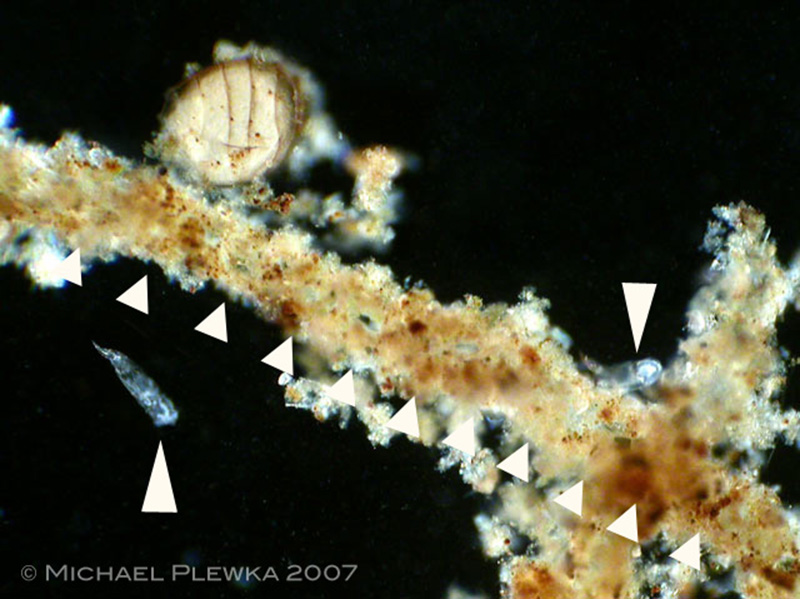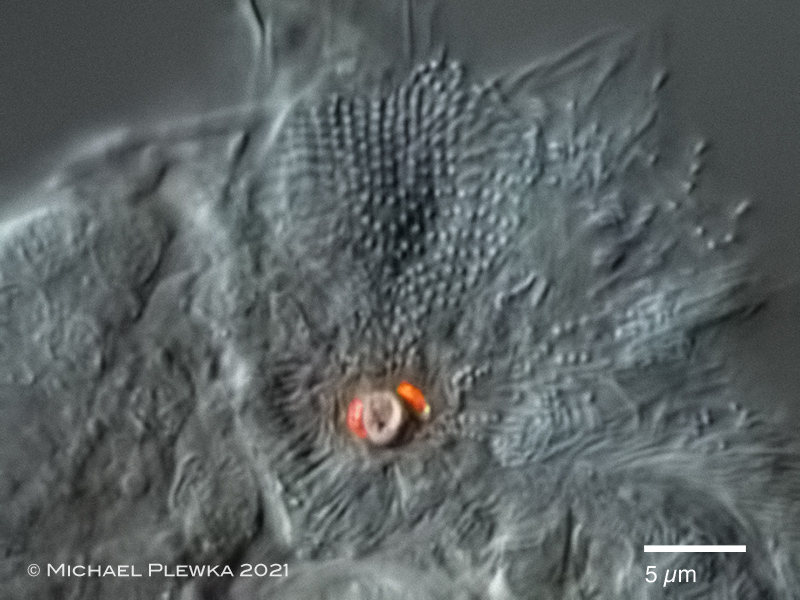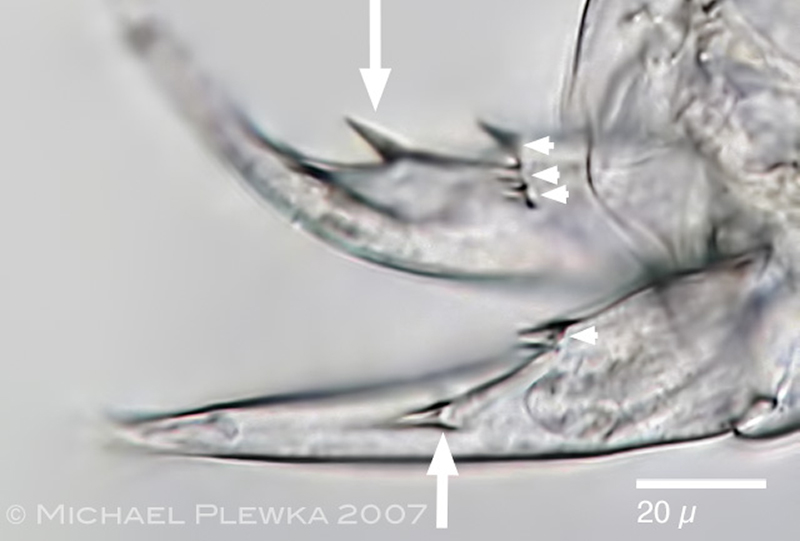| Cephalodella forficula, lateral view. The habitus of this species is quite similar to Cephalodella stenroosi, but C. forficula has a frontal eyespot and several spicules (arrowheads) on the dorsally bent toes (see also images below). (4) |
| |
 |
| Cephalodella forficula sometimes builts tubes out of detritus (marked by small triangles) which may inhabit several specimens (large triangles). (2) |
| |
|
| Cephalodella forficula, left: head with frontal eyespots and lens (1). Right: spicule rows on the toes of a macerated specimen from (4). This trait is in contrast to the species Cephalodella Own observations show that the anterior row may have 2-4 spicules (arrowheads), whereas the posterior location has only a single spicule (arrows). |
| |
 |
| Cephalodella forficula, frontal view of a compressed specimen. Detail of the eyespots and the lens (4) |
| |
 |
| Cephalodella forficula; the arrowheads point to the dorsal anterior transverse row of (2 to 4; not all of them are in focus in this image) spicules; the arrows point to the posterior single larger spine. This is in contrast to Cephalodella stenroosi (without frontal eyespot) and Cephalodella panarista (with frontal eyespot), both of which have similar dorsally bent toes, but only a single dorsal spicule. (2) |
| |
| |
| Cephalodella forficula, lateral view, specimen from (3). |
| |
 |
| Cephalodella forficula, specimen from (2), virgate trophi; trophus Type D, dorsoventral view. |
|
| |
| |
|
| Cephalodella forficula, upper left: swimming specimen, dorsoventral view (2); upper right: the toes are splayed out in a typical position rectangular to the body axis. The two frontal eyespots with a single lens are visible. (1); lower left: specimen from (3); lower right: specimen from (6); |
| |
| |
| |
|
|
| |
| |
| |
|
|
| |
| |
|
|
| |
| |
| Location: Hattingen, Oberstüter; garden pond (4) |
| Habitat: between algae (Spirogyra); feeding on Euglenoids (Phacus, Euglena) (4) |
| Date: 21.02.2021 (4) |
| |
| |
| |
|
|